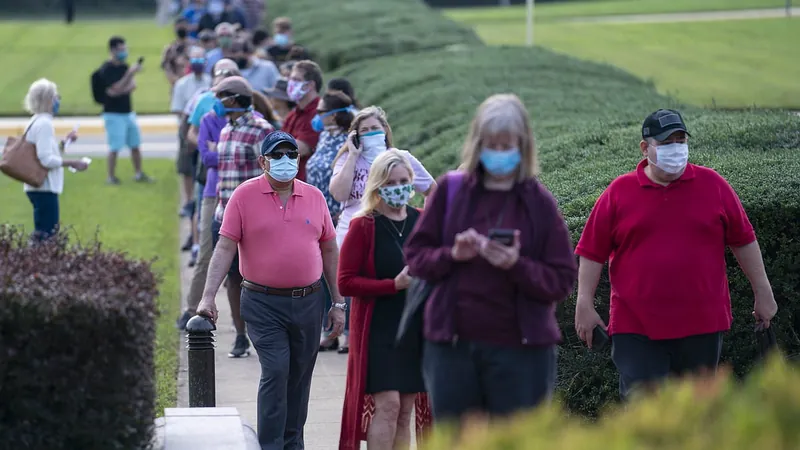
Alert! hMPV Outbreak on the Rise in the US: What You Need to Know!
2025-01-13
Author: Lok
Introduction
Recent data reveals that human metapneumovirus (hMPV), a virus that has raised alarm bells in China, is seeing a concerning uptick in the United States. According to the Centers for Disease Control and Prevention (CDC), around 2.2 percent of tests conducted nationwide in the week ending January 4 showed positive results for hMPV, marking a 25 percent increase from the previous week. This means approximately one in 50 Americans presenting with a cough may actually be infected with this virus.
What is hMPV?
Known by some healthcare professionals as "the most important virus you've never heard of," hMPV has drawn global attention following reports from China, where medical facilities are filled with patients. Videos circulating on Chinese social media echo the early days of the COVID-19 pandemic, thus triggering fears of a potential resurgence in viral outbreaks.
Current Trends in the US
Despite these concerning trends, experts stress that the current hMPV cases in the US are not out of the ordinary for this time of year. Most individuals infected with the virus experience mild symptoms typical of a common cold—such as cough, runny or blocked nose, sore throat, and slight fever—due to the body's immune response. Symptoms typically resolve within five days, but some may also encounter nausea or vomiting.
Risks for Vulnerable Populations
For those with pre-existing health conditions, hMPV can lead to more severe complications like bronchitis, bronchiolitis, and pneumonia. One case underlines this risk: Diane Davison, a 60-year-old lawyer from Maryland, suffered violent coughing fits that left her “unable to speak.”
Geographical Hotspots
Hotspots for hMPV are concentrated in the Midwest, particularly in Missouri, Kansas, Nebraska, and Iowa, where the positive test rates have soared to 5.83 percent—more than double the national average. Meanwhile, influenza continues to pose a more substantial threat, with nearly 20 percent of tests returning positive for the flu.
International Trends and Outlook
In a glimmer of hope, Chinese health officials recently announced a decline in hMPV cases in northern provinces, especially among younger patients. They reported that fever clinic visits are rising but remain lower than last year's levels, with no significant shortages in medical resources reported.
Prevention and Precautions
Interestingly, hMPV doesn't have available vaccines or specific treatments, making preventative measures crucial. Health experts underscore the importance of good hygiene practices, such as regular hand washing, wearing masks in crowded environments, and avoiding close contact with sick individuals.
Statistics and Comparisons
Statistics indicate that around 20,000 children under five in the US are hospitalized due to hMPV every year, with a few hundred fatalities attributed to the illness. In comparison, over 1 million Americans have sought emergency care for respiratory syncytial virus (RSV), and influenza has infected nearly 10 million since October alone.
Transmission
Much like COVID-19, hMPV spreads through respiratory droplets from coughs or sneezes, and can also be transmitted through close contact or touching contaminated surfaces.
Conclusion
Stay vigilant and informed as this outbreak unfolds—hMPV might just be the next public health challenge to watch closely!



 Brasil (PT)
Brasil (PT)
 Canada (EN)
Canada (EN)
 Chile (ES)
Chile (ES)
 Česko (CS)
Česko (CS)
 대한민국 (KO)
대한민국 (KO)
 España (ES)
España (ES)
 France (FR)
France (FR)
 Hong Kong (EN)
Hong Kong (EN)
 Italia (IT)
Italia (IT)
 日本 (JA)
日本 (JA)
 Magyarország (HU)
Magyarország (HU)
 Norge (NO)
Norge (NO)
 Polska (PL)
Polska (PL)
 Schweiz (DE)
Schweiz (DE)
 Singapore (EN)
Singapore (EN)
 Sverige (SV)
Sverige (SV)
 Suomi (FI)
Suomi (FI)
 Türkiye (TR)
Türkiye (TR)
 الإمارات العربية المتحدة (AR)
الإمارات العربية المتحدة (AR)